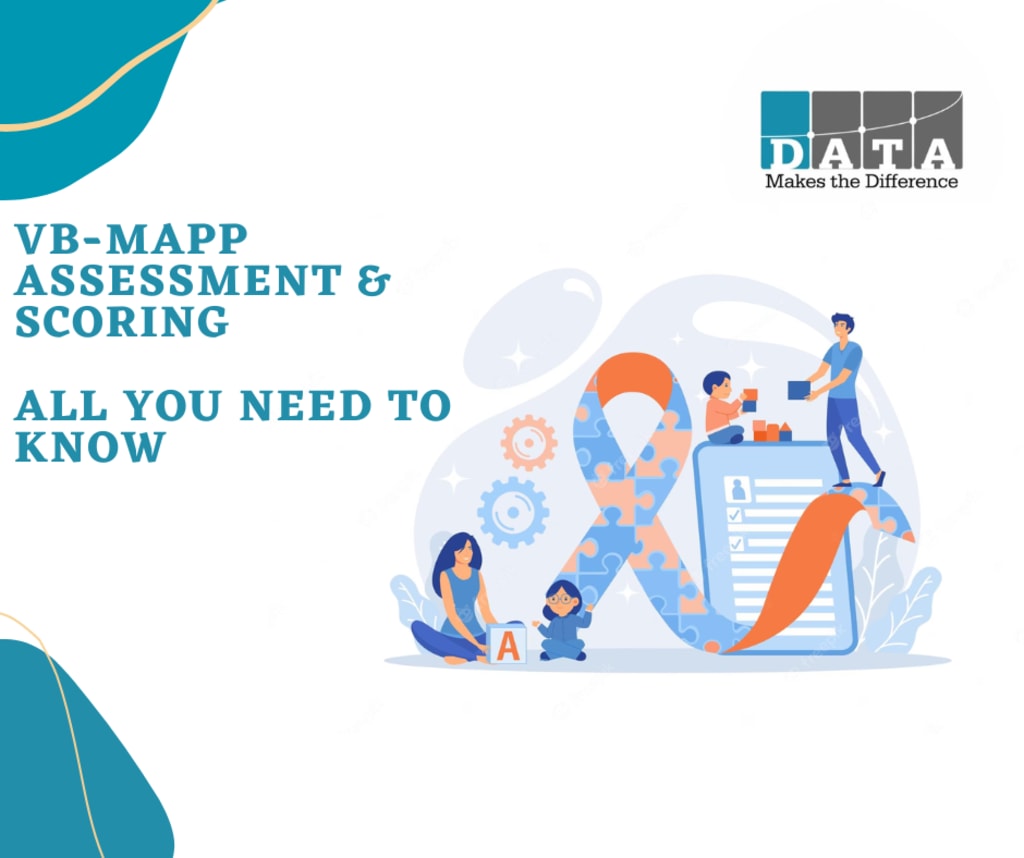VB-MAPP Assessment & Scoring | All You Need to Know
The VB MAPP assessment is designed to evaluate a child's skills and abilities across various verbal behavior milestones.

VB-MAPP Assessment:
The VB MAPP assessment is designed to evaluate social skills of children with autism spectrum disorder (ASD) or other developmental disabilities. Developed by Dr. Mark L. Sundberg, the VB-MAPP focuses on the principles of applied behavior analysis (ABA) and the analysis of verbal behavior. It consists of five components: the Milestones Assessment, Barriers Assessment, Transition Assessment, Task Analysis and Supporting Skills, and the Early Echoic Skills Assessment. These components cover domains such as manding (requesting), tacting (labeling), listener responding, social skills, play skills, and visual perceptual skills. By assessing these milestones, professionals can gain valuable insights into a child's strengths and areas that require intervention.
The VB-MAPP is divided into three sections or components:
Milestones Assessment: This component assesses a wide range of language and social skills across several developmental domains, including vocalizations, manding (requesting), tacting (labeling), intraverbals (responding to questions or statements), listener responding, play skills, social skills, and group skills.
Barriers Assessment: This component identifies any potential barriers or challenges that may be interfering with a child's progress in acquiring language and social skills. It helps pinpoint specific skills that may require additional intervention or teaching strategies.
Transition Assessment: This component evaluates a child's readiness to transition from one level of the VBMAPP to the next. It focuses on assessing skills required for more advanced language and social interactions, such as conversational skills, perspective-taking, and empathy.
During the assessment, professionals may use a variety of techniques and prompts to elicit specific responses from the child. These can include providing choices, modeling desired behaviors, using visual supports, or employing naturalistic teaching strategies. The assessment is individualized, taking into account the unique abilities and needs of each child.
The results of the VB-MAPP assessment provide valuable information that can guide intervention planning. Professionals can use the scores and performance levels to identify priority areas for intervention and develop individualized treatment goals. The assessment helps determine which specific skills to target, what teaching strategies to employ, and how to track progress over time.
The VB-MAPP assessment is not a one-time event but an ongoing process. It is recommended to periodically reassess the child to monitor their progress and make adjustments to the intervention plan as needed. Regular assessments help measure skill acquisition, identify areas that may require additional support, and track overall progress towards long-term goals.
VB-MAPP Scoring:
Scoring the VB-MAPP assessment involves a systematic process to measure a child's performance in each milestone area. Each milestone is assigned a numerical score based on specific criteria, ranging from zero to three. The scores indicate the child's level of mastery within each skill area. A score of zero indicates no response, while a score of three indicates independent and fluent performance. The cumulative scores across all milestones provide a comprehensive profile of the child's overall skill development.
Scoring in the VB-MAPP is based on a criterion-referenced system, which means that each skill is evaluated against a specific set of criteria. The scoring system includes three levels of performance:
Level 0: The child does not demonstrate any of the required skills for a specific criterion.
Level 1: The child demonstrates some of the skills but not consistently or with mastery.
Level 2: The child demonstrates the skills consistently and with mastery.
In addition to the levels of performance, the VB-MAPP also includes specific scores for each skill or milestone. These scores provide a more detailed assessment of a child's abilities within each domain and can be used to track progress over time.
It's important to note that the VB MAPP scoring should be administered by trained professionals who have experience with ABA and working with individuals with autism or developmental disabilities. The results of the assessment can inform individualized intervention plans and help guide the selection of appropriate teaching strategies and targets for intervention.
Remember to consult with a qualified professional or a Board Certified Behavior Analyst (BCBA) for a comprehensive understanding and guidance on using the VB-MAPP assessment and scoring in practice.
In summary, the VB-MAPP assessment is a valuable tool for evaluating the language and social skills of children with autism and other developmental disabilities. Through its comprehensive components and criterion-referenced scoring system, it provides professionals with insights into a child's abilities, identifies barriers to progress, and informs intervention planning. By utilizing the VB-MAPP and working with trained professionals, individuals with autism can receive targeted and effective interventions that support their development and enhance their quality of life.
About the Creator
Data Makes The Difference
Data Makes is the maker of the VB-MAPP App. Dr. Mark Sundberg and Dr. Patrick McGreevy is the author of the Essential for Living App.
Enjoyed the story? Support the Creator.
Subscribe for free to receive all their stories in your feed. You could also pledge your support or give them a one-off tip, letting them know you appreciate their work.






Comments
There are no comments for this story
Be the first to respond and start the conversation.